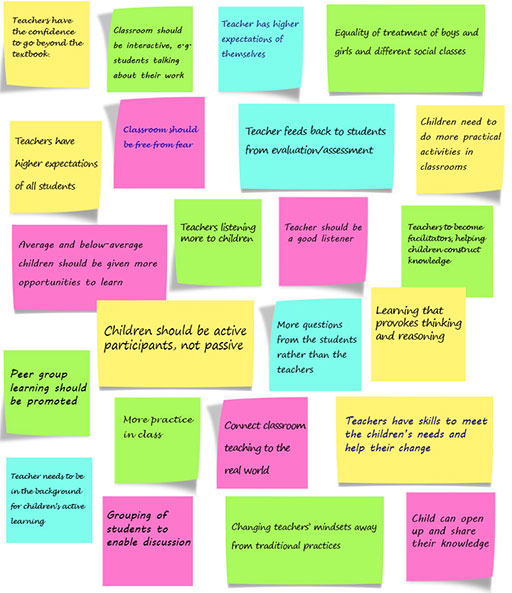2 What needs to change?

Giving all students access to a high-quality school education is the central aim of global and national education policies. As you have seen, there is an emerging consensus that quality in education is achieved through promoting:
- learner–centred practices that give value to each learner’s prior knowledge and experiences
- school structures that enable student participation.
Realising this change depends on the quality of teachers; this in turn depends on teacher education. Research shows that teacher educators play a crucial role in developing skilled teachers (Musset, 2010:3).
What changes might you initiate in your own practice as a teacher educator and with teachers that you work with? In Activity 1.3 you consider changes needed in classrooms in your area.
Activity 1.3: Your vision for change
In your study notebook, write three or four bullet points to describe what you would change in classrooms in your area in order to support your vision for teaching and learning. The following questions may help you:
- Think about the classrooms you have visited recently. Have all the students been actively engaged in learning? How could you tell?
- What would you like to see teachers doing more often or less often?
- What would you like to see students doing more often?
Look at the examples below of classroom changes suggested by teachers and teacher educators at a recent workshop in India. Categorise them using the following headings:
- Teachers valuing all children
- Teachers guiding learning
- Teachers as resourceful, skillful professionals
- Teachers enabling dialogue
- Teachers promoting active engagement
- Note down which statements you agree with and which you think are most important. What category represents the most significant change for teachers in your area?
- Select your top three ideas for change. Discuss your ideas with a colleague or peer and explain why you think these are your highest priority. What ideas or priorities does your colleague have? How do they compare with your own?
1 A global vision for teaching and learning?

